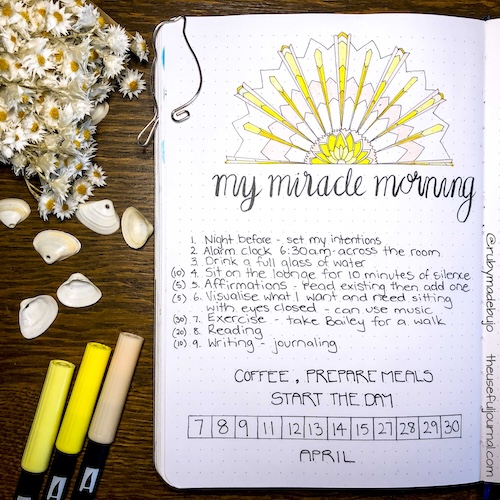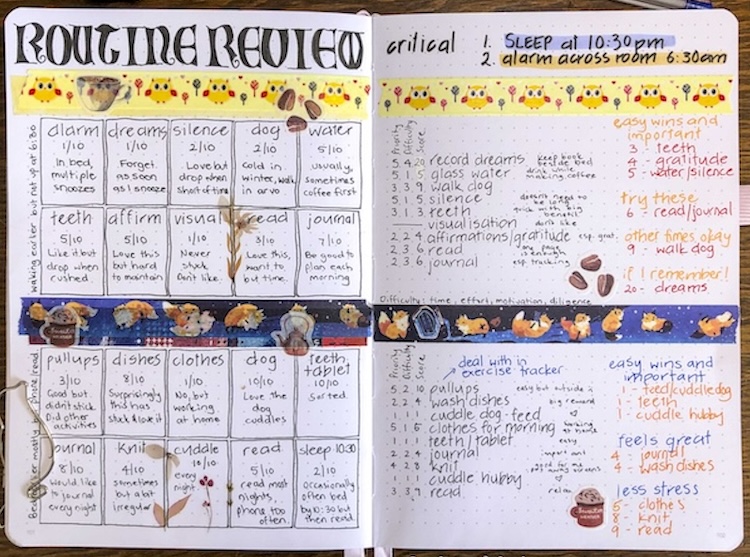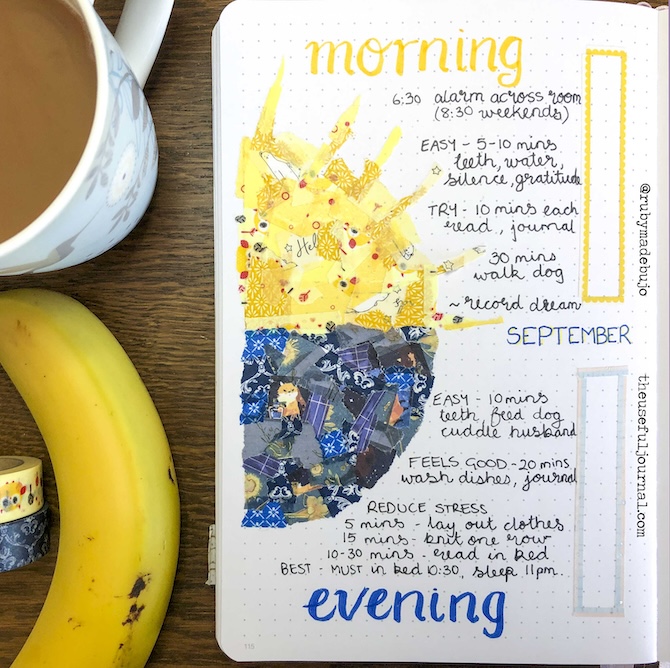How I reviewed my morning and evening schedules, found a fast way to do daily spreads, and got things done
Sometimes we get so much to do that we can’t decide what to do, end up overwhelmed and do nothing. Sound familiar? In some contexts, this can be called decision fatigue. Trying to decide what to do, which things are most important, when we should do them, they’re all decisions, and our brains are in overdrive, trying to work all this out, while thinking about what we’d rather be doing. This is why we resort to task lists. I’ve been reading a great book about to-do lists and I’ll review it soon. For now, I’ve come up with a solution to get me through busy days and try and get some of my most important tasks ticked off on my list.
I found I was wasting a lot of time each day, often on social media. As you might know if you’ve read my blogs on miracle mornings and enhanced evenings, I’ve tried to introduce schedules to my mornings and evenings. I had worked out what I must do each morning and evening, and how long I would spend on each activity.

Where the system let me down was not in the list, but my tracking against it. If I didn’t do absolutely everything on that list, I felt I couldn’t colour in a box to show I’d completed the morning or evening schedule. I lost motivation because there was no visual reward, which is personally important for me to succeed.
In my routine review, you can see how I reviewed my miracle morning and enhanced evening. I gave each element of my routine a score for how well I thought I had applied it, and then wrote myself a note about why it did or didn’t stick.

It was good to see that in some ways, the routines had been a great success. I was cleaning my teeth in the morning, regularly, for the first time in my life. I had started washing up each evening and hated waking up in the morning to a dirty kitchen. While I didn’t always get up at 6:30am, I was definitely getting up earlier than I had been prior to creating my routines. I was reading more, both in the morning and the evening, and I wasn’t taking my phone to bed any more.
I then scored each activity for priority (how important I thought the activity was), with 1 being top priority and 5 being a very low priority. So feeding the dog – 1 – high priority; recording my dreams – 5 – nice but not a priority. I then scored difficulty; the time, effort, motivation and diligence required to do the task. This was scored the opposite way around, with 1 being easy and 5 being difficult. These two scores were multiplied together to give the final score. Activities with low scores were important but were also easy to do, so there was no argument for not getting them done. Recording my dreams was very low priority (it doesn’t change my life), and is also hard, because as soon as you stop running the dream through your mind it disappears (so frustrating), so this one was easy to drop off the list.
I created a new spread. This re-established my morning and evening routines, setting them out in terms of tasks that were easy, tasks I should try to do, and tasks that would reduce stress or were an added bonus if I finished them. I added a page that let me tick off each activity. Look at all those crosses! Overall, I was doing quite a lot of my tasks, but I rarely did all of them each day. Just doing this many is a big improvement on what I had done in the past! But doing this kind of spread on a monthly basis was unwieldily and a big time investment.

In the end, I decided I would use my Poooliprint to print out daily schedules. I could pre-create the lists in Procreate for every kind of day I expect to have. This included preparing a standard schedule for days I work at home, days I go to the city to work, days I stay home to study, and ‘lazy’ days. They were reasonably quick to prepare in Procreate, because I could prepare a template and then copy them across to new lists and adjust as necessary. I ended up with about six lists.
The lists focus on my morning and evening routines, and you can see my most basic one in the ‘plan with me’ video below. During the day, the focus is on applying the pomodoro method of completing 25-minute blocks of focused work, broken up by 5-minute breaks. Every block of four is followed by a 25-minute break. I can use these breaks to prepare meals, get a coffee, or complete mini-tasks. I prepare a list of things that I could possibly do in those breaks in the morning when I’m journaling. If cleaning is on my day’s list, I note down what I might clean.
The trick is not being rigid about it. If I miss something, that’s okay. The idea is that I don’t have to think about all the standard stuff I have to get done, because I’ve got an easy reference list. It’s also satisfying to mark it off. I can scribble on it, change it, and incorporating it into a daily spread means I’ve also got a bit of space for journaling, noting additional tasks and anything else on my mind. Take a look at my video to see how I pull it all together. I’m off now to mark ‘prepare a blog post’ as complete on my list.

